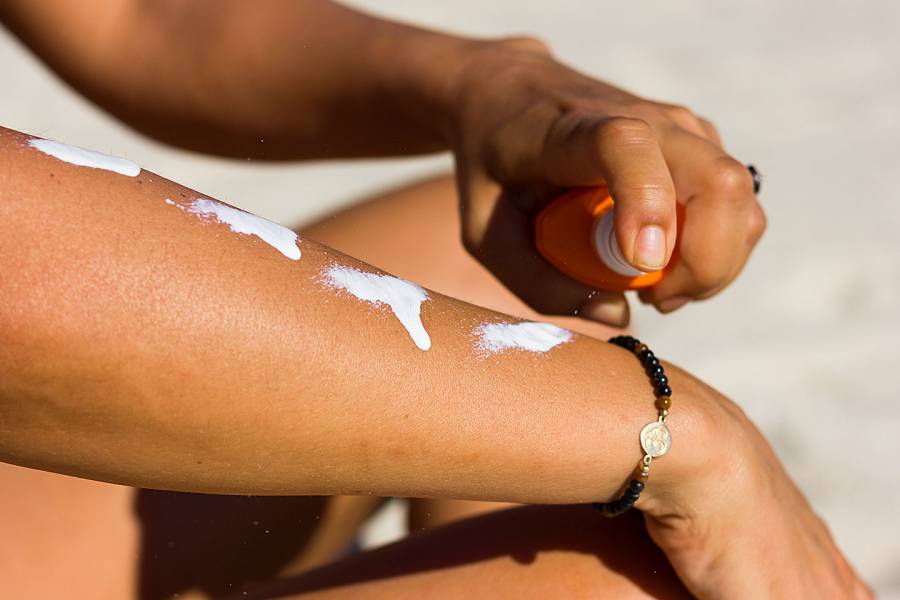This content is provided to Johns Hopkins employees through a partnership with CareFirst BlueCross BlueShield.
Being active outdoors is an important part of living healthy, but be sure to protect your skin when outside because sun exposure can lead to skin cancer.
What is skin cancer and what causes it?
Skin cancer is a disease in which malignant cells form in the layers of the skin. Almost all skin cancers are caused by exposure to the ultraviolet (UV) radiation found in sunlight and tanning bed light. While the sun—and a tan—may make you feel better, the sun damages skin, causing freckles, wrinkles, sagging, and skin cancer.
Most skin cancers are preventable.
UV rays can penetrate clouds and are harmful any time of the year, so practice these healthy habits winter, spring, summer, and fall: + Seek the shade, especially between 10 a.m. and 4 p.m., when the sun is at its strongest. + Cover up with clothing, including wide-brim hats and UV-blocking sunglasses. + Use a broad spectrum (UVA/UVB) sunscreen with an SPF of 15 or higher. If you are planning on extended outdoor activity, use water-resistant, broad-spectrum sunscreen with an SPF of 30 or greater. Follow label instructions for application frequency and amount. + Keep newborns out of the sun, and don't use sunscreen on babies younger than 6 months. Dressing infants in long pants and long-sleeved shirts made of lightweight, tight-weave fabrics is a safer solution.
It's never too late to begin practicing sun protection year-round. Preventing further sun damage may even help to reverse some sun damage already done.
Who is at risk?
Anyone can get skin cancer; however, your risk is increased by certain factors including:
- Fair or freckled skin, light-colored eyes, blond or red hair
- Family or personal history of skin cancer
- History of sunburns—having had five or more doubles your risk
- History of sun or tanning bed exposure
- Large number of moles
Know the warning signs.
Catching skin cancer early is vital; up to 95 percent of all skin cancers can be cured if detected and treated early. A monthly self-exam is your best defense. Using a mirror, look head to toe for:
- Spots on the skin that change in size, shape, or color
- Unusual sores, lumps, blemishes, marks, or changes in the way an area of the skin looks or feels
- Moles that change size, shape, color; bleed; or have ragged edges
If you notice any of these signs, call your doctor right away.
The majority of a person's lifetime sun exposure is acquired by age 18, so it is important for parents to teach their children how to protect their skin. Being a good role model and starting healthy sun protection habits early can mean healthy skin for a lifetime.
Posted in Health+Well-Being
Tagged hr newswire








